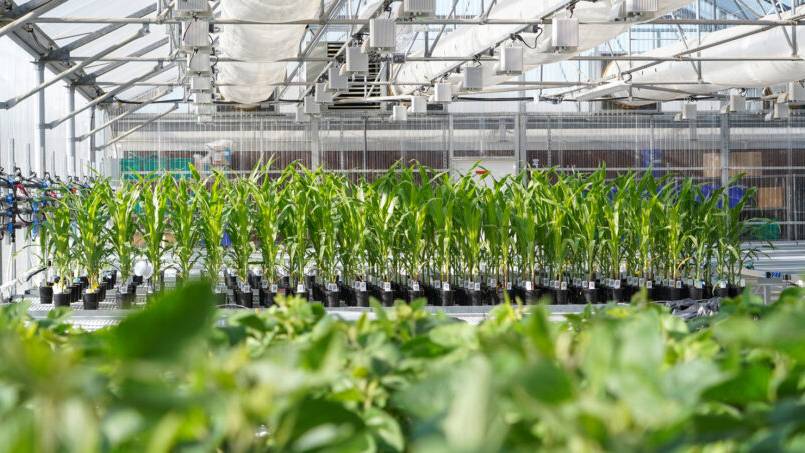Cereal Numbers
Buoyed by a robust global economy, agricultural market conditions improved during the second half of 2006. The picture was more variable at the regional level, with rain shortages affecting a number of key regions. Australia was hit hardest, with output dropping by an average 60% to 70%. Dry conditions in parts of Southeast Asia and Latin America, probably related to El Niño conditions, are likely to prevail during the first quarter of 2007.
Looking forward, stagnation or the failure of the Doha Round could change the context in which farmers make their plans for planting. These include postponed or less ambitious national agricultural policy reforms, the proliferation of bilateral trade agreements, and more WTO dispute settlement procedures. The enlargement of the EU to include Bulgaria and Romania should have a positive impact on the agricultural sectors of these two countries.
On the environmental side, there is growing awareness, including in a number of developing countries, of the need to improve nitrogen use efficiency.
Cereal Demand Booming
Although lower than in 2004 and 2005, estimates of world cereal production for 2006 approached 2 billion metric tonnes (Mt), according to the Food and Agriculture Organization (FAO). Coarse grain and wheat is contracting, while rice output has been increasing steadily.
At the same time, cereal demand is booming, influenced essentially by the recovery of world meat production and by surging ethanol production in the US.
As a result, world cereal stocks are slipping, with an aggregate stock-to-use ratio as low as 16%, according to the projections of the US Department of Agriculture (USDA). This is the lowest level registered for more than two decades.
As a consequence, international cereal prices are high, with maize futures skyrocketing.
Bioenergy Effect Overstated
Biofuel production is gaining momentum in an increasing number of countries, supported by policy objectives. According to the International Energy Agency (IEA), 37 billion litres (Bl) of biofuels were produced in 2005. Although detailed figures are not yet available for 2006, it is clear that this trend is continuing, fueled by the rapid expansion of ethanol production in the US, where maize is the main feedstock.
Processing crops for ethanol or biodiesel generates large amounts of co-products which contain all the nitrogen (N), phosphorus (P), and potassium (K) from the crop. Because a large share of these co-products is recycled in agriculture, the impact of biofuel on fertilizer appears to be modest. This is particularly true for P and K, because there are greater losses of N during the recycling process.
Fertilizer Demand Up
World fertilizer consumption plateaued at 153.1 Mt nutrients in 2005/06. Demand for N was up by 1.1%, while P and K consumption contracted by 1.3% and 3.2%, respectively. Firm growth occurred in countries where fertilizer subsidies mitigated the impact of high fertilizer prices and low commodity prices.
In 2006/07, high cereal prices for maize, wheat, and rice are expected to boost fertilizer demand in all regions but Northeast Asia and Oceania. Fertilizer consumption is forecast to reach 160.0 Mt. Demand for P would grow faster than demand for K and N.
Projections to 2007/08 indicate the expansion of demand will slow down. Total consumption is predicted to rise 3%, with stronger growth for K than for P or N.
Most of this growth would occur in South and East Asia. These two regions together will account for almost 70% of the increase in world fertilizer consumption from 2005 to 2007.
Most Markets Tighten
The supply of fertilizers, particularly urea and other nitrogen products, increased in 2006 in response to improving global demand. While demand for processed phosphates and potassium fertilizers was firm, production was at best stable and trade variable, depending on the product.
Looking forward, the markets for nitrogen, phosphate, and potassium will be balanced or tight. In contrast, sulfur will begin to show a surplus in 2007.
Nitrogen Balanced
Nitrogen supply/demand conditions in 2006 were tighter than expected. Global seaborne ammonia capacity showed limited net growth in 2006. Despite further increases in capacity, the global nitrogen supply/demand situation will remain relatively balanced during 2007.
The global urea market was unexpectedly firm in 2006, with growing trade levels, relatively tight supply, and sustained demand. Despite increased tonnage from Egypt and Saudi Arabia, the supply of merchant urea was generally tight due to the absence of China and Indonesia from international trade and a series of manufacturing disruptions in several countries.
Urea is gradually displacing other nitrogen fertilizers in several countries. The world urea market may remain tight in the first half of 2007, with firming import demand across the globe. New capacity will emerge in the second half of 2007, leading to a growing urea surplus.
Potash Surplus Tightens
World potash demand was strong in 2006, but international sales dropped due to a carry-over of stocks in India and China. In addition, the supply shrank unexpectedly at the end of 2006. World potash production declined by more than 9%. Furthermore, drawn-out negotiations between suppliers and two major importers significantly dampened the level of global trade during the first half of 2006.
There were limited capacity additions, with most of the increase occurring in Canada and China. In 2007, global capacity will expand marginally but the loss of a major mine in Russia will further tighten supply in the short term.
The global potash balances for 2006 and 2007 show tight supply conditions against growing demand, leading to a steady decline of the surplus. World potash sales in 2007 are projected to expand, with firm import demand in all major consuming countries.
Phosphate Market Tightens
Global production and trade of phosphate rock decreased in 2006. The supply of phosphoric acid was tight on account of strong domestic demand, but trade declined due to technical supply disruptions. World phosphoric acid capacity was relatively stable in 2006, but will decline in 2007 due to restructuring in North America. The global supply/demand balance of phosphoric acid shows a marginal surplus in 2006 and a relatively balanced, if not tight, situation in 2007.
Between 2005 and 2007, the world’s phosphate fertilizer capacity has barely expanded. Yet in 2007, the global market for processed phosphates is projected to grow, notably due to rising domestic deliveries and higher exports in most consuming countries.
Surplus Expected For Sulfur
The global sulfur market in 2006 showed sustained growth in the industrial sector and firm import demand. Global market conditions were relatively balanced, but withdrawals from stocks were needed to match demand for the third year in a row.
In 2006, the demand for elemental sulfur showed a modest increase related to greater production of phosphate-based fertilizers. From 2005 to 2007, the global balance between production and consumption of elemental sulfur has shifted from a modest negative balance in 2005 and 2006 to an expected net surplus of 1 Mt in 2007, marking a turning point toward growing annual surpluses.
For more details, please consult “World Agriculture Situation and Fertilizer Demand, Global Fertilizer Supply and Trade: 2006-2007” at the IFA web site.





